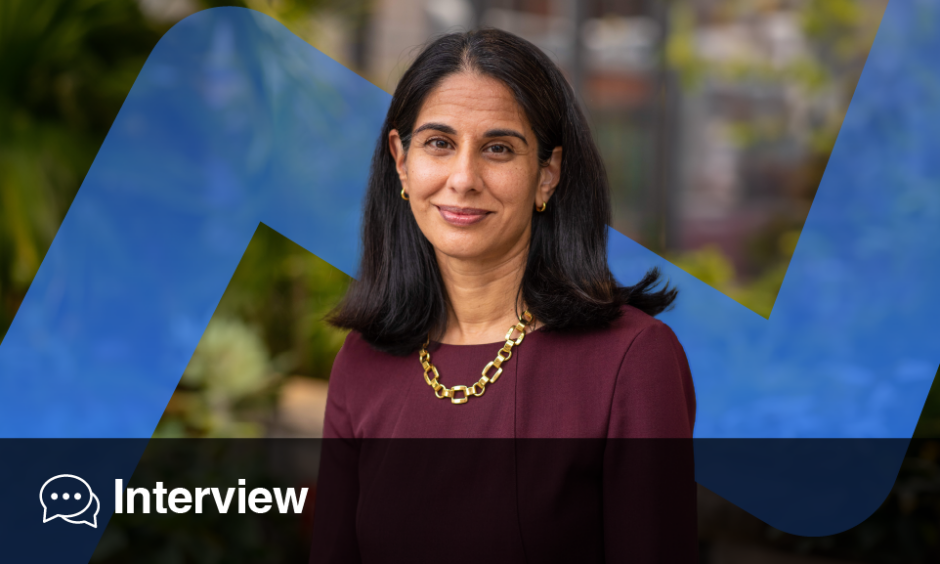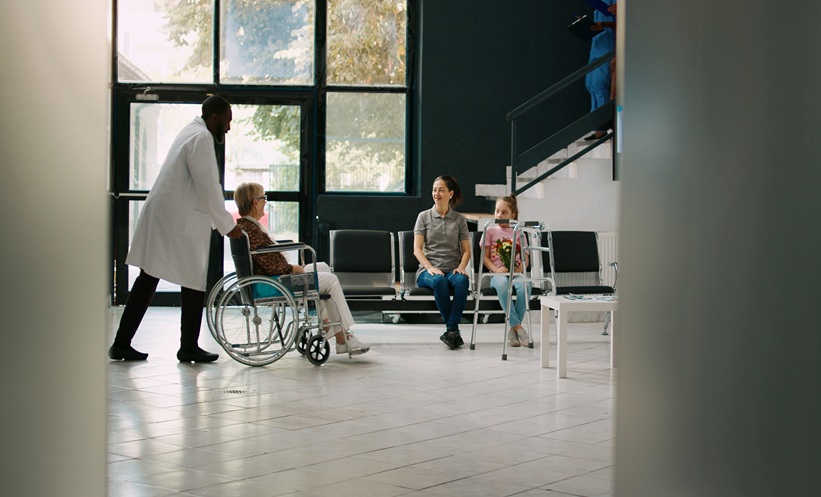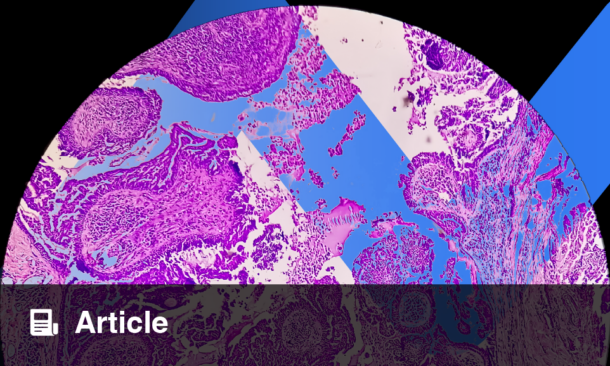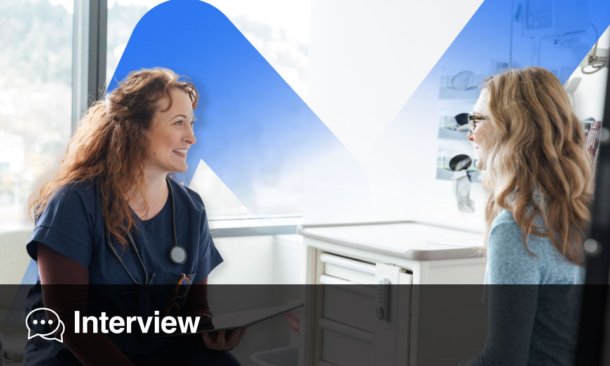Sara Tolaney | Chief of the Division of Breast Oncology, Dana-Farber Cancer Institute, Boston, USA
Citation: EMJ Oncol. 2024;12[1]:96-100. https://doi.org/10.33590/emjoncol/YXSG7435.
![]()
Your academic journey spans prestigious institutions like Princeton, University of California San Francisco, and Johns Hopkins. What motivated you to pursue a career in medicine, and how did your experiences during your education shape your focus on oncology?
I started having an interest in medicine from a young age. Part of what drove my interest was having various family members go through complicated medical journeys. When I was in high school, my dad was diagnosed with prostate cancer at an early age, and my mom was actually diagnosed with lupus, so I saw the challenges that my own parents went through. I realised that it’s such an important relationship that patients have with their physicians, and what a difference it can make to have a physician whom you feel that you can trust and rely on through that challenging journey. I felt like it was a privilege to be in that kind of a role and thought it would be a nice thing to be able to pursue. I was also very interested in science when I was in college and did some research during my summers.
At Princeton, they make you do a senior thesis, so I had the opportunity to spend some time in the laboratory. However, I did realise that the lab probably wasn’t the place for me. While I enjoyed the science behind things, I really felt that I loved the interaction with people the most, and I loved trying to see a more immediate impact on patients. Through medical school, I started getting more involved in clinical research and also had an opportunity to spend time doing an oncology rotation. I think that’s when I realised that’s where my passion lay because I had a chance to see the journey that physicians take with their patients when they have a cancer diagnosis, and how close that relationship is. These are patients whom you’re often seeing, sometimes weekly, over years, and you get to know the challenges that they’re going through. You get to know their mom, their brother, and their sister. You really get a different experience with that individual patient at a very challenging time in their life.
Then, during residency at Johns Hopkins, I did an internal medicine residency. However, I still did spend time starting to do some clinical research in breast cancer with Antonio Wolff there, and I even learnt how to write a clinical trial. When I started my fellowship at Dana-Farber Cancer Institute, I had the honour of working with Eric Winer, who is a world leader in the field of breast oncology. From an early time point, I realised his vision was to always put the patient first.
That vision really carried over into everything he did. Not just what wonderful care he took of patients, where it was clear that, when he was in the room with the patient, all that mattered was making sure that they felt heard and that he could do all that he could for them. This vision also influenced the work he did in his research, where I could see that the design of clinical trials also took that into account. It really influenced me to put the patient at the forefront of everything that I did, not just to make outcomes better but also to improve the quality of life, and it has carried over into the work that I’ve done ever since.
After completing your residency and fellowships, you obtained a Master’s in Public Health from Harvard University. How has this additional training in public health influenced your approach to cancer research and patient care?
During fellowship, we have an opportunity to take what they call a ‘clinical effectiveness course’ at the Harvard School of Public Health. I realised how much of a gap in my knowledge there was during that time because you get to take statistics and you have an opportunity to take more epidemiology. There was also a course that I really loved, which was the fundamentals of clinical trial design. I realised I did need more formal training to be able to do the work I wanted to do well, so I decided to actually complete the Master’s in Public Health so that I felt that I had the fundamentals that I needed to be able to do clinical research.
You’ve been instrumental in advancing treatment approaches for breast cancer. Could you describe your role in the development of novel therapies, particularly in the context of HER2+ breast cancer?
When I started on faculty at Dana-Farber, I started not just working within the breast oncology centre but also within our Phase I clinical trials unit. This is where I had the opportunity to be able to work with a lot of drugs that were being tested for the very first time in humans, and that was a good learning lesson for how drug development was done. It really taught me how you take a drug from the first time being given to humans and figure out what the optimal dose is, what the side effects are, how to be able to understand pharmacokinetics and pharmacodynamics, and how that then could play a role in trying to move that drug forward. During that time, I had an opportunity to see that Phase I work is tough because a lot of drugs, unfortunately, will not move forward and end up not panning out.
But every once in a while, you get to find a drug that is not just super effective, but also well tolerated. So, during my time doing Phase 1 work, one agent that was just being tested for the first time was CDK4/6 inhibitors. We did the work first in human studies, and then eventually combined it with endocrine therapy, and even combined it with anti- HER2 therapy. It was really such a wonderful experience to be able to see a drug move from Phase I to Phase II and Phase III, and get registered, not just in the metastatic setting, but now also in the curative early-stage setting.
I really enjoyed that aspect of drug development, and I continued to do a lot of Phase I work for many years. But in that work, taking the lesson Winer had taught me, which was putting the patient first, I wanted to make sure that we weren’t just developing drugs that were going to be super effective for people, but we also needed to figure out how to give the right amount of therapy to the right patient.
In that time, one of the major questions was how do we treat people who had smaller HER2+ cancers, because most of the large registration trials had not addressed this population. We knew, for example, that trastuzumab was highly effective. In essence, it could reduce recurrence almost by half if added to chemotherapy, but the way it was given back then was with a lot of chemotherapy. So, if you had a patient who had a slightly lower-risk disease, it seemed a little excessive to give them all that chemotherapy with trastuzumab, but it also seemed like they needed some level of systemic therapy because their risk was not insignificant. We tried to figure out how to appropriately treat these patients by trying to give a little bit of chemotherapy with trastuzumab and found that you could give, in essence, 12 weeks of paclitaxel and trastuzumab, and that these patients with small HER2+ cancers rarely recurred if you did that.
Since then, I’ve been trying to figure out how we can do even better. When trying to tailor therapy for this group of patients, could we give agents that have less side effects? Could we use antibody-drug conjugates? We did a study where we used trastuzumab emtansine (T-DM1) in this population, which also looked very effective, but it was given for a year, and we thought that maybe that’s too much, so now we’re doing more work trying to shorten the duration. We are also doing other work where we’re trying to get rid of chemotherapy, even completely. All of this work really stems from the idea of optimising therapy, and we’ve even taken this concept and applied it to triple-negative breast cancer, where we are looking at optimising immunotherapy. We are not sure that we need to be giving patients a full year of checkpoint inhibition, so we’re now running a trial through the cooperative group system, trying to see if patients who achieve a good response to chemotherapy and a checkpoint inhibitor may not need additional checkpoint inhibition. So again, a lot of my work has been trying to tailor therapy to the individual patient.
Antibody-drug conjugates (ADC) have been a significant focus of your research. Can you explain how ADCs are revolutionising breast cancer treatment, and what potential they hold for the future?
ADCs are the new wave of the future. The idea that we could give targeted chemotherapy into cancer cells has proven to be certainly more effective than standard chemotherapy has been to date. Doing all that Phase I work early on in my career, I got to see one of the very first trials with the Phase I study for sacituzumab govitecan and saw the tremendous responses. I remember a patient that I had on the very first study of sacituzumab, where they had an expansion cohort in triple-negative breast cancer, who had had seven prior lines of chemotherapy for metastatic triple-negative breast cancer and went on to this trial. You could imagine her cancer probably was highly resistant to multiple therapies, and yet, she went on to this and was on therapy for almost 5 years with a tremendous response. That really just highlighted the powers of an ADC, because you could see a patient who was, in essence, resistant to almost every drug that we have in breast cancer and yet could have such a response to an ADC. I think one of the challenges with ADCs, though, is initially we would have thought that if you’re giving targeted delivery of chemotherapy, that maybe you’re not going to see chemotherapy side effects. But unfortunately, we do see side effects from these agents that are not that dissimilar from standard chemotherapy.
Right now, we’ve seen how ADCs can transform outcomes for patients. We’re trying to move these drugs even earlier in the metastatic setting, and with many trials now ongoing to try to move it as the first chemotherapy and, maybe even more importantly, also trying to move it into the curative setting. There are trials that are looking to see if we can replace part or all of standard chemotherapy in the preoperative or adjuvant setting, and I think this will be really important to see. But we haven’t quite figured out which patient is going to benefit the most from which drug or if they can be used sequentially. That’s going to really need to be the wave of the future as more of these agents come out. They’re truly transformative drugs, and hopefully we’ll not just figure out how to sequence and order them but also how to optimise the toxicities of these agents.
De-escalation of therapy is an emerging trend aimed at reducing treatment intensity without compromising outcomes. Could you elaborate on the criteria and considerations that guide the decision to de-escalate therapy in patients with breast cancer?
Yes, I think this idea of de-escalation really stems from the same concept of personalising therapy or optimising treatment for the patient. This means trying to give the right amount of treatment to the right patient at the right time. One would hope that we could think about doing this in a biomarker-driven approach; however, I don’t think we are quite there yet. Instead, much of the work with optimisation has initially focused on trying to use the basic clinical anatomic stage. So, if someone had a tiny cancer, for example, they probably could get away with less therapy. If someone has a big cancer, they probably need more therapy. That’s the way, I think, crudely, things were tailored, with the initial optimisation studies purely based on risk, based on anatomic stage.
One of the first studies that did this looked at paclitaxel and trastuzumab in Stage 1 HER2+ cancers predominantly. It found that people at lower clinical anatomic risk could get away with less therapy, but I think we’re trying to become even more sophisticated, and so another way to do that could be to tailor based on response to treatment. For example, if someone gets preoperative therapy and they have a complete pathologic response, they’re probably going to do pretty well. But then there’s the flip side of people who don’t have a good response, who have residual disease, who probably need more, and so, there are escalation trials for the people with residual disease that are ongoing. We are moving from tailoring therapy based on anatomic risk to tailoring based on response to therapy, and the next step is to be able to use biomarkers. There are efforts trying to develop more novel assays that could help us tailor therapy. For example, there’s a novel assay called HER2DX, which is trying to use gene expression on a tumour that’s HER2+ to hopefully be able to help us tailor therapy. So, if you have a HER2DX result that suggests a very high probability of pathological complete response, maybe you get away with single-agent chemotherapy with dual HER2-directed therapy; whereas, if you have not such a good probability of pathological complete response, maybe you need more intensification of chemotherapy with HER+ directed treatment. We need these kinds of biomarkers. I also hope ctDNA could help us tailor in the future, helping understand if minimal residual disease, for example, can tell you if someone needs more versus less. That’s the direction a lot of these tailoring studies are going to move in breast cancer over the next several years.
What drives your passion for breast cancer research, and how do you stay motivated despite the challenges associated with developing new therapies?
You know, I think just seeing patients in clinic every day is what keeps us motivated. It is honestly the most thrilling thing in the world when you see a patient who gets a new drug and has a home run response; that’s what keeps us all going. It’s what drives us to do more. I think it’s also what makes this job such a wonderful one.
You’ve mentored many young professionals in oncology. What advice do you offer to those entering the field, particularly those interested in breast cancer research?
It’s a privilege to get to mentor a lot of our young fellows and faculty members. It’s fun to see them grow in their careers and be able to succeed. What I’ve found to be very useful for young faculty and mentors is to make sure that they have a mentor that they feel comfortable with and feel like it is giving them opportunities. One challenge that I see, though, is that breast oncology has become really complicated, and sometimes one mentor can’t mentor you in everything. For example, I may be able to mentor someone in clinical research, but I don’t have the skill set to help them understand computational biology or to address very fundamental basic science questions. So, what I’ve done for a lot of our mentees is to make sure they all have a senior mentor who is their primary mentor, but they also have a mentorship team that meets with them regularly. We also have mentorship committee meetings on a regular basis. I think it’s so important that they feel that they’re surrounded by a team of individuals who can help address all the things that they need to be able to learn and be able to develop their own interests and careers and give them the opportunities to do what they think is going to be the most gratifying for them and fulfilling. It does take a village, and it’s always important to surround yourself with those people who are going to help you succeed.







